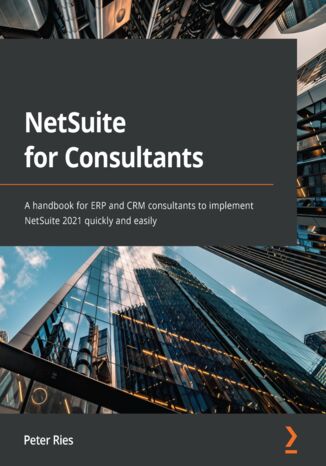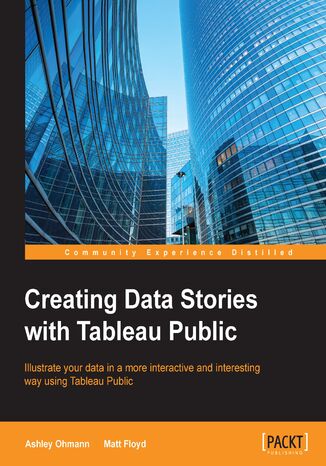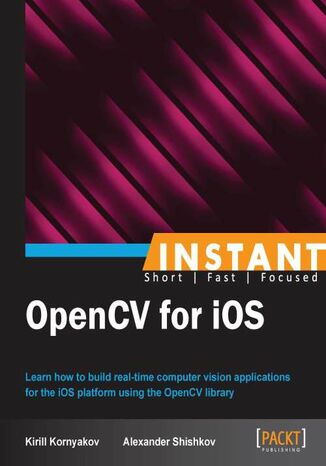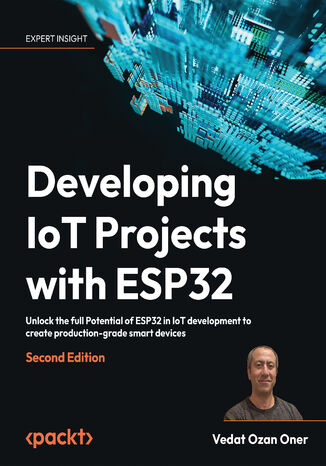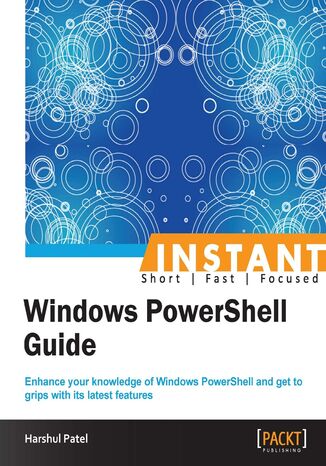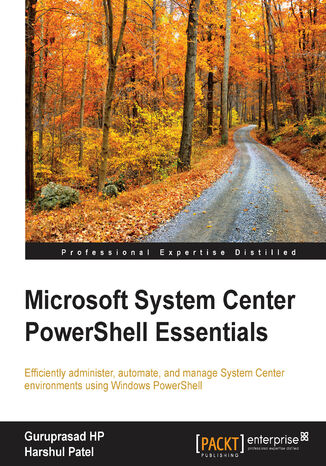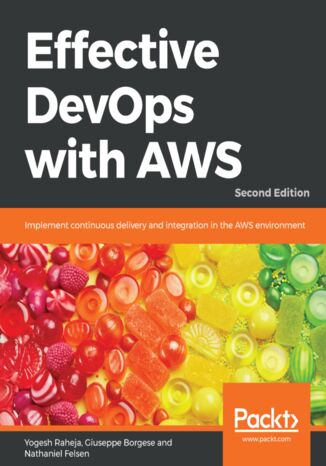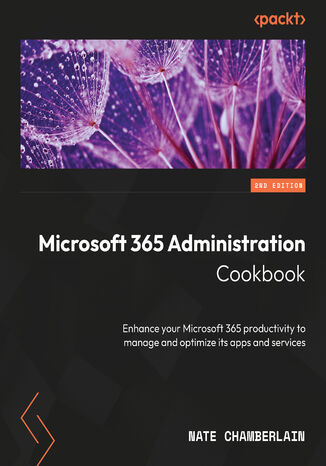Categories
Ebooks
-
Business and economy
- Bitcoin
- Businesswoman
- Coaching
- Controlling
- E-business
- Economy
- Finances
- Stocks and investments
- Personal competence
- Computer in the office
- Communication and negotiation
- Small company
- Marketing
- Motivation
- Multimedia trainings
- Real estate
- Persuasion and NLP
- Taxes
- Social policy
- Guides
- Presentations
- Leadership
- Public Relation
- Reports, analyses
- Secret
- Social Media
- Sales
- Start-up
- Your career
- Management
- Project management
- Human Resources
-
For children
-
For youth
-
Education
-
Encyclopedias, dictionaries
-
E-press
- Architektura i wnętrza
- Health and Safety
- Biznes i Ekonomia
- Home and garden
- E-business
- Ekonomia i finanse
- Esoterecism
- Finances
- Personal finance
- Business
- Photography
- Computer science
- HR & Payroll
- For women
- Computers, Excel
- Accounts
- Culture and literature
- Scientific and academic
- Environmental protection
- Opinion-forming
- Education
- Taxes
- Travelling
- Psychology
- Religion
- Agriculture
- Book and press market
- Transport and Spedition
- Healthand beauty
-
History
-
Computer science
- Office applications
- Data bases
- Bioinformatics
- IT business
- CAD/CAM
- Digital Lifestyle
- DTP
- Electronics
- Digital photography
- Computer graphics
- Games
- Hacking
- Hardware
- IT w ekonomii
- Scientific software package
- School textbooks
- Computer basics
- Programming
- Mobile programming
- Internet servers
- Computer networks
- Start-up
- Operational systems
- Artificial intelligence
- Technology for children
- Webmastering
-
Other
-
Foreign languages
-
Culture and art
-
School reading books
-
Literature
- Antology
- Ballade
- Biographies and autobiographies
- For adults
- Dramas
- Diaries, memoirs, letters
- Epic, epopee
- Essay
- Fantasy and science fiction
- Feuilletons
- Work of fiction
- Humour and satire
- Other
- Classical
- Crime fiction
- Non-fiction
- Fiction
- Mity i legendy
- Nobelists
- Novellas
- Moral
- Okultyzm i magia
- Short stories
- Memoirs
- Travelling
- Narrative poetry
- Poetry
- Politics
- Popular science
- Novel
- Historical novel
- Prose
- Adventure
- Journalism, publicism
- Reportage novels
- Romans i literatura obyczajowa
- Sensational
- Thriller, Horror
- Interviews and memoirs
-
Natural sciences
-
Social sciences
-
School textbooks
-
Popular science and academic
- Archeology
- Bibliotekoznawstwo
- Cinema studies
- Philology
- Polish philology
- Philosophy
- Finanse i bankowość
- Geography
- Economy
- Trade. World economy
- History and archeology
- History of art and architecture
- Cultural studies
- Linguistics
- Literary studies
- Logistics
- Maths
- Medicine
- Humanities
- Pedagogy
- Educational aids
- Popular science
- Other
- Psychology
- Sociology
- Theatre studies
- Theology
- Economic theories and teachings
- Transport i spedycja
- Physical education
- Zarządzanie i marketing
-
Guides
-
Game guides
-
Professional and specialist guides
-
Law
- Health and Safety
- History
- Road Code. Driving license
- Law studies
- Healthcare
- General. Compendium of knowledge
- Academic textbooks
- Other
- Construction and local law
- Civil law
- Financial law
- Economic law
- Economic and trade law
- Criminal law
- Criminal law. Criminal offenses. Criminology
- International law
- International law
- Health care law
- Educational law
- Tax law
- Labor and social security law
- Public, constitutional and administrative law
- Family and Guardianship Code
- agricultural law
- Social law, labour law
- European Union law
- Industry
- Agricultural and environmental
- Dictionaries and encyclopedia
- Public procurement
- Management
-
Tourist guides and travel
- Africa
- Albums
- Southern America
- North and Central America
- Australia, New Zealand, Oceania
- Austria
- Asia
- Balkans
- Middle East
- Bulgary
- China
- Croatia
- The Czech Republic
- Denmark
- Egipt
- Estonia
- Europe
- France
- Mountains
- Greece
- Spain
- Holand
- Iceland
- Lithuania
- Latvia
- Mapy, Plany miast, Atlasy
- Mini travel guides
- Germany
- Norway
- Active travelling
- Poland
- Portugal
- Other
- Przewodniki po hotelach i restauracjach
- Russia
- Romania
- Slovakia
- Slovenia
- Switzerland
- Sweden
- World
- Turkey
- Ukraine
- Hungary
- Great Britain
- Italy
-
Psychology
- Philosophy of life
- Kompetencje psychospołeczne
- Interpersonal communication
- Mindfulness
- General
- Persuasion and NLP
- Academic psychology
- Psychology of soul and mind
- Work psychology
- Relacje i związki
- Parenting and children psychology
- Problem solving
- Intellectual growth
- Secret
- Sexapeal
- Seduction
- Appearance and image
- Philosophy of life
-
Religion
-
Sport, fitness, diets
-
Technology and mechanics
Audiobooks
-
Business and economy
- Bitcoin
- Businesswoman
- Coaching
- Controlling
- E-business
- Economy
- Finances
- Stocks and investments
- Personal competence
- Communication and negotiation
- Small company
- Marketing
- Motivation
- Real estate
- Persuasion and NLP
- Taxes
- Social policy
- Guides
- Presentations
- Leadership
- Public Relation
- Secret
- Social Media
- Sales
- Start-up
- Your career
- Management
- Project management
- Human Resources
-
For children
-
For youth
-
Education
-
Encyclopedias, dictionaries
-
E-press
-
History
-
Computer science
-
Other
-
Foreign languages
-
Culture and art
-
School reading books
-
Literature
- Antology
- Ballade
- Biographies and autobiographies
- For adults
- Dramas
- Diaries, memoirs, letters
- Epic, epopee
- Essay
- Fantasy and science fiction
- Feuilletons
- Work of fiction
- Humour and satire
- Other
- Classical
- Crime fiction
- Non-fiction
- Fiction
- Mity i legendy
- Nobelists
- Novellas
- Moral
- Okultyzm i magia
- Short stories
- Memoirs
- Travelling
- Poetry
- Politics
- Popular science
- Novel
- Historical novel
- Prose
- Adventure
- Journalism, publicism
- Reportage novels
- Romans i literatura obyczajowa
- Sensational
- Thriller, Horror
- Interviews and memoirs
-
Natural sciences
-
Social sciences
-
Popular science and academic
-
Guides
-
Professional and specialist guides
-
Law
-
Tourist guides and travel
-
Psychology
- Philosophy of life
- Interpersonal communication
- Mindfulness
- General
- Persuasion and NLP
- Academic psychology
- Psychology of soul and mind
- Work psychology
- Relacje i związki
- Parenting and children psychology
- Problem solving
- Intellectual growth
- Secret
- Sexapeal
- Seduction
- Appearance and image
- Philosophy of life
-
Religion
-
Sport, fitness, diets
-
Technology and mechanics
Videocourses
-
Data bases
-
Big Data
-
Biznes, ekonomia i marketing
-
Cybersecurity
-
Data Science
-
DevOps
-
For children
-
Electronics
-
Graphics/Video/CAX
-
Games
-
Microsoft Office
-
Development tools
-
Programming
-
Personal growth
-
Computer networks
-
Operational systems
-
Software testing
-
Mobile devices
-
UX/UI
-
Web development
-
Management
Podcasts
NetSuite For Consultants takes a hands-on approach to help ERP and CRM consultants implement NetSuite quickly and efficiently, as well deepen their understanding of its implementation methodology.During the course of this book, you’ll get a clear picture of what NetSuite is, how it works, and how accounts, support, and updates work within its ecosystem.Understanding what a business needs is a critical first step toward completing any software product implementation, so you'll learn how to write business requirements by learning about the various departments, roles, and processes in the client's organization. Once you've developed a solid understanding of NetSuite and your client, you’ll be able to apply your knowledge to configure accounts and test everything with the users. You’ll also learn how to manage both functional and technical issues that arise post-implementation and handle them like a professional.By the end of this book, you'll have gained the necessary skills and knowledge to implement NetSuite for businesses and get things up and running in the shortest possible time.
Kirill Kornyakov, Aleksander Shishkov
Computer vision on mobile devices is becoming more and more popular. Personal gadgets are now powerful enough to process high-resolution images, stitch panoramas, and detect and track objects. OpenCV, with its decent performance and wide range of functionality, can be an extremely useful tool in the hands of iOS developers.Instant OpenCV for iOS is a practical guide that walks you through every important step for building a computer vision application for the iOS platform. It will help you to port your OpenCV code, profile and optimize it, and wrap it into a GUI application. Each recipe is accompanied by a sample project or an example that helps you focus on a particular aspect of the technology.Instant OpenCV for iOS starts by creating a simple iOS application and linking OpenCV before moving on to processing images and videos in real-time. It covers the major ways to retrieve images, process them, and view or export results. Special attention is also given to performance issues, as they greatly affect the user experience.Several computer vision projects will be considered throughout the book. These include a couple of photo filters that help you to print a postcard or add a retro effect to your images. Another one is a demonstration of the facial feature detection algorithm. In several time-critical cases, the processing speed is measured and optimized using ARM NEON and the Accelerate framework.OpenCV for iOS gives you all the information you need to build a high-performance computer vision application for iOS devices.
ESP32, a low-cost and energy-efficient system-on-a-chip microcontroller, has become the backbone of numerous WiFi devices, fueling IoT innovation. This book offers a holistic approach to building an IoT system from the ground up, ensuring secure data communication from sensors to cloud platforms, empowering you to create production-grade IoT solutions using the ESP32 SoC.Starting with IoT essentials supported by real-world use cases, this book takes you through the entire process of constructing an IoT device using ESP32. Each chapter introduces new dimensions to your IoT applications, covering sensor communication, the integration of prominent IoT libraries like LittleFS and LVGL, connectivity options via WiFi, security measures, cloud integration, and the visualization of real-time data using Grafana. Furthermore, a dedicated section explores AI/ML for embedded systems, guiding you through building and running ML applications with tinyML and ESP32-S3 to create state-of-the-art embedded products.This book adopts a hands-on approach, ensuring you can start building IoT solutions right from the beginning. Towards the end of the book, you'll tackle a full-scale Smart Home project, applying all the techniques you've learned in real-time.Embark on your journey to build secure, production-grade IoT systems with ESP32 today!
Windows PowerShell has become a booming scripting language over the last couple of years. It has extensive support with an ample number of vendor products, providing a standardized platform for automation and administration. It has massive support for all Microsoft products which creates a layer that can easily automate everything. In the latest version, the PowerShell team has introduced much more functionality with thousands of CMDLETs, part of various modules.This book is a quick reference guide to enable you to get the most out of the latest Windows PowerShell techniques. In this book, you will find new enhancements in the latest version of PowerShell with some helpful examples. This book enables you to quickly move from older versions of PowerShell to Version 3.0 and Version 4.0.This practical, example-oriented book helps you to overcome the difficulty of using and discovering CMDLETs by providing precise information about everything that has been newly introduced in the latest version of Windows PowerShell. It also focuses on the new configuration management system with the help of DSC as a new feature of Windows PowerShell v4.0.You will learn how to use the newly introduced CMDLETs and parameters to perform daily routine tasks. You will also learn how to administer the servers remotely and maintain persistent sessions to provide continuity. You will gain an insight into writing efficient scripts by using various parameters, snippets, and workflows to gain more productivity. You will also be introduced to various modules like CimCmdlets, PSScheduledJob, PSDesiredStateConfiguration, and so on in order to enhance your scripts with the latest instrumentation. Finally this book will make you aware of the capabilities of PowerShell v4.0 and how to fully leverage the functionality introduced in the new version.
Yogesh Raheja, Giuseppe Borgese, Nathaniel Felsen
The DevOps movement has transformed the way modern tech companies work. Amazon Web Services (AWS), which has been at the forefront of the cloud computing revolution, has also been a key contributor to the DevOps movement, creating a huge range of managed services that help you implement DevOps principles.Effective DevOps with AWS, Second Edition will help you to understand how the most successful tech start-ups launch and scale their services on AWS, and will teach you how you can do the same. This book explains how to treat infrastructure as code, meaning you can bring resources online and offline as easily as you control your software. You will also build a continuous integration and continuous deployment pipeline to keep your app up to date. Once you have gotten to grips will all this, we'll move on to how to scale your applications to offer maximum performance to users even when traffic spikes, by using the latest technologies, such as containers. In addition to this, you'll get insights into monitoring and alerting, so you can make sure your users have the best experience when using your service. In the concluding chapters, we'll cover inbuilt AWS tools such as CodeDeploy and CloudFormation, which are used by many AWS administrators to perform DevOps. By the end of this book, you'll have learned how to ensure the security of your platform and data, using the latest and most prominent AWS tools.
Nate Chamberlain, Karuana Gatimu
Overcome the complexity of Microsoft 365 administration with tailored, step-by-step recipes. This second edition shows you how to configure, secure, and automate your environment using modern tools and proven best practices.Written by Microsoft MVP Nate Chamberlain, this updated edition reflects the latest features and services in Microsoft 365. Whether you’re tackling common admin tasks or developing advanced automations, each recipe provides real-world guidance and hands-on solutions.You'll start by setting up your tenant, assigning roles, and streamlining identity management with Microsoft Entra ID. Then, dive into key apps like SharePoint, Teams, OneDrive, and Viva Engage, and learn how to configure them for collaboration and compliance. Advanced recipes guide you through automating tasks using PowerShell and Microsoft Graph, managing communication with Exchange Online, and reinforcing security with Defender and Purview.By the end of this book, you'll be able to confidently manage your Microsoft 365 environment and maximize its value in your organization.

